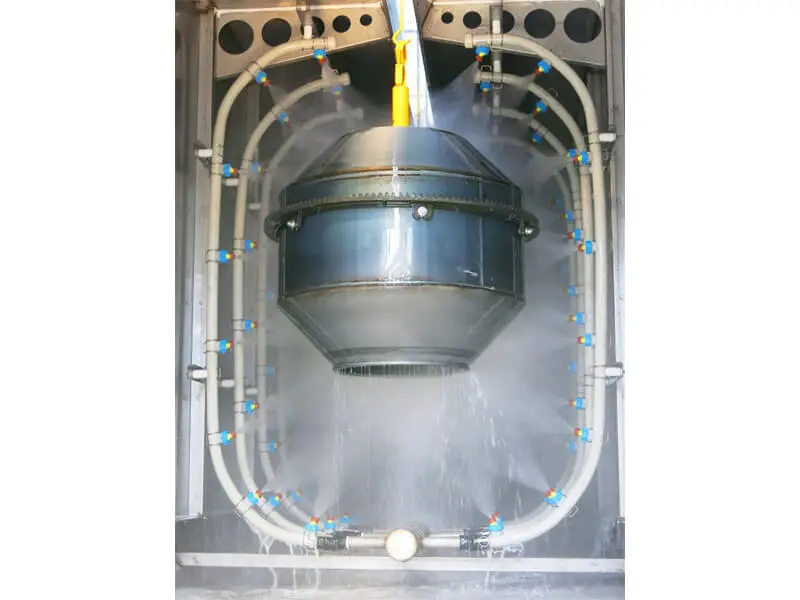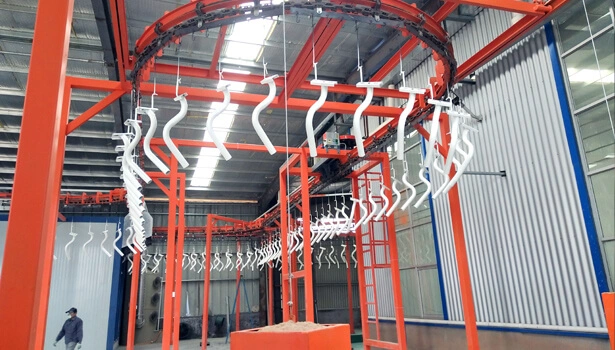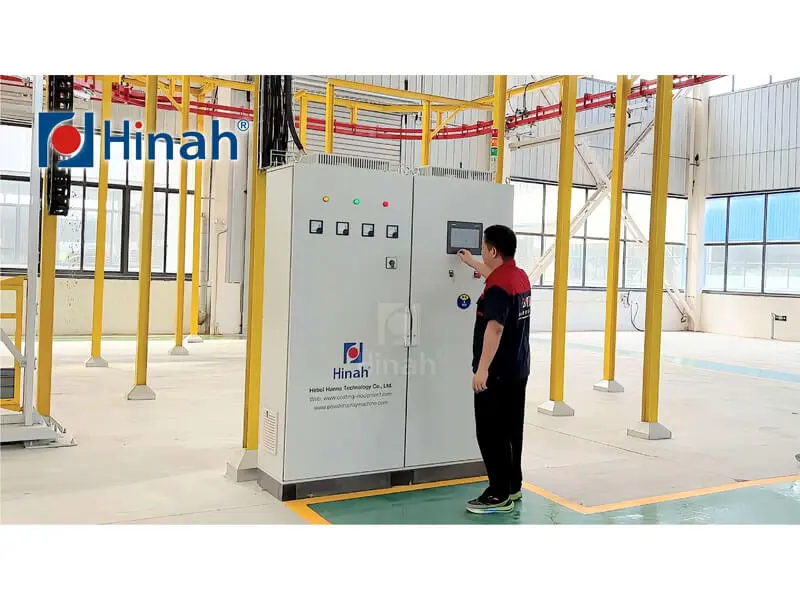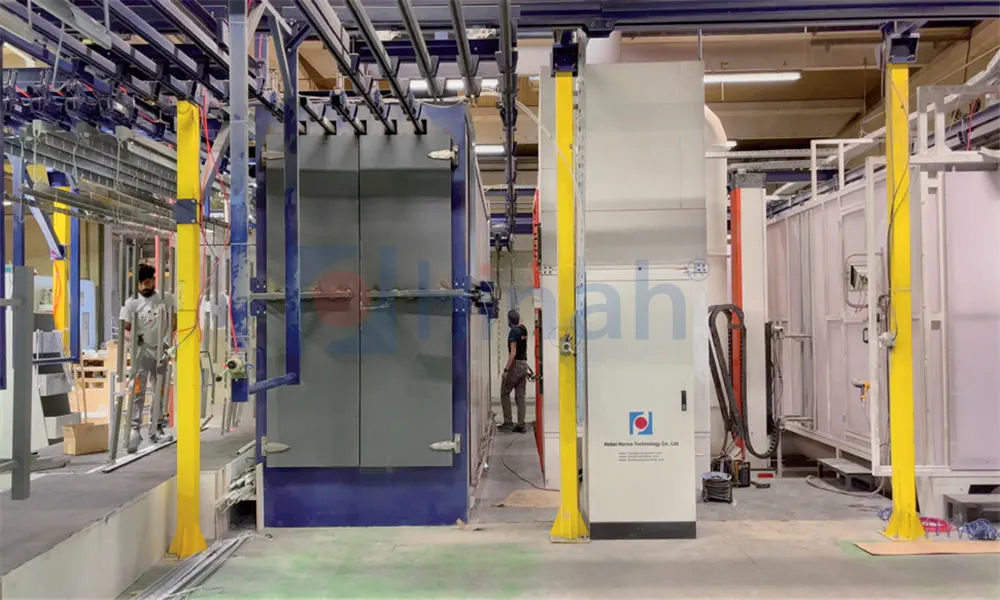I'll never forget the visit to that struggling fabrication shop in early 2024. The owner showed me their powder coating operation, frustration evident in his voice. "We're losing more powder than we're using," he confessed, pointing to the fine red dust coating everything outside their makeshift spray area. Their production had increased, but profitability hadn't—all because they'd underestimated the importance of a properly engineered powder booth. This scenario plays out daily in workshops worldwide. Having consulted with numerous manufacturers and collaborated with industry leaders like HANNA, I've witnessed how the right powder booth transforms operations from chaotic to controlled. This comprehensive guide walks through seven critical factors that determine your success with this essential equipment.
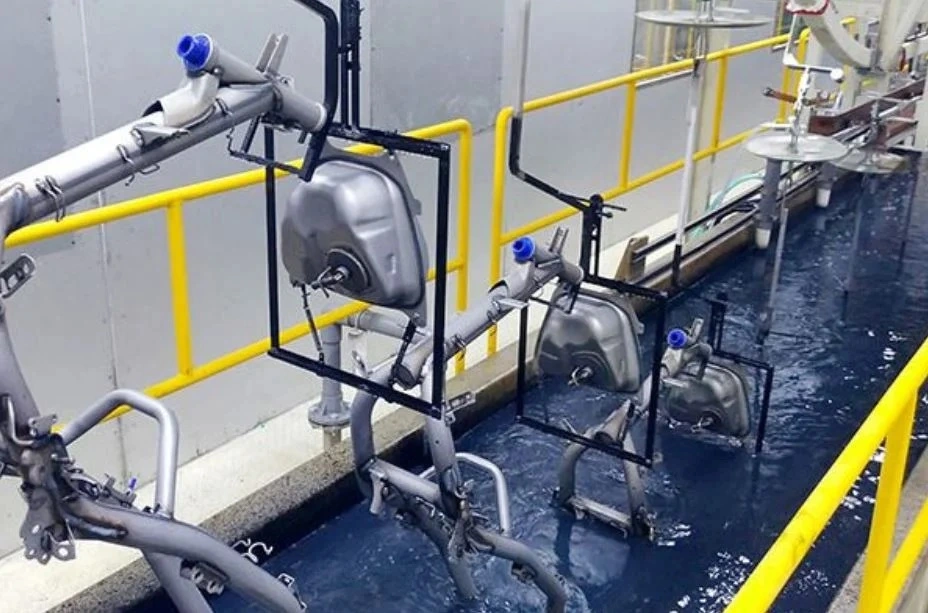
Understanding the Modern Powder Booth: More Than Just an Enclosure
At first glance, a powder booth might appear to be a simple enclosure where spraying occurs. In reality, it's a sophisticated environmental control system designed to contain the coating process, protect operators, and maximize material efficiency. Contemporary powder booth designs incorporate precisely engineered airflow patterns, advanced filtration technology, and ergonomic features that collectively determine your coating quality and operational costs. The fundamental purpose remains consistent: to create a controlled environment where powder can be applied efficiently while containing overspray. However, the execution varies dramatically between basic sheet metal enclosures and professionally engineered systems. Through my work with HANNA engineers, I've learned that the most successful powder booth installations begin with understanding that this equipment represents the heart of your coating operation—where application efficiency and finish quality are ultimately determined.
Powder Booth Configurations: Matching Design to Application
Selecting the appropriate powder booth configuration represents your most significant initial decision. The three primary designs—downdraft, crossdraft, and semi-downdraft—each serve distinct applications based on production volume, part geometry, and quality requirements. Downdraft powder booth systems, where air flows vertically downward through the work area, provide the cleanest environment for high-finish applications like automotive components. The downward airflow carries overspray away from the operator and workpiece, minimizing contamination. Crossdraft powder booth designs, with horizontal airflow across the work zone, offer cost-effective solutions for general industrial applications with simpler part geometries. Semi-downdraft configurations create a diagonal airflow pattern that balances performance and installation cost. I recently advised a architectural aluminum manufacturer who switched from crossdraft to downdraft powder booth systems and reduced their reject rate by 18%—proving that matching booth design to application specifics delivers measurable returns.
Critical Technical Specifications for Your Powder Booth
Beyond basic configuration, several technical factors dramatically impact powder booth performance. Airflow velocity—typically measured in feet per minute across the booth opening—must be sufficient to contain overspray without disrupting the application process or wasting powder. Professional powder booth engineering specifies velocities between 100-150 FPM for most applications, carefully balanced throughout the enclosure. Filtration efficiency represents another crucial consideration; cartridge filtration systems in modern powder booth designs capture 99.9% of overspray when properly maintained. Lighting quality directly affects application precision—I consistently recommend minimum 1000 lux illumination at the workpiece level. The construction materials—galvanized steel, stainless steel, or composite panels—determine longevity in demanding industrial environments. When evaluating a powder booth from manufacturers like HANNA, request documented performance data for these specifications rather than relying on general claims.
The Business Case: Analyzing Powder Booth Costs and ROI
Many operations focus exclusively on the initial purchase price when budgeting for a powder booth, overlooking the substantial operational costs that determine long-term value. While entry-level powder booth systems might start around $20,000, comprehensive solutions with advanced recovery and automation interfaces can reach $150,000 or more. However, the true cost analysis must consider operational efficiency—specifically powder utilization rates. A high-performance powder booth with efficient recovery systems typically captures 95-98% of overspray for reuse, while basic designs might recover only 70-80%. For operations spending $50,000 annually on powder, this difference represents $10,000-15,000 in annual savings. Energy consumption represents another significant operational cost; premium powder booth designs incorporate variable frequency drive (VFD) fans that adjust airflow based on production requirements, reducing electricity usage by 30-40% compared to fixed-speed systems. HANNA provides detailed ROI calculations that help customers understand how investing in an efficient powder booth delivers payback typically within 12-24 months through reduced material and energy costs.

Custom Powder Booth Solutions: When Standard Designs Fall Short
While standard powder booth configurations serve many applications effectively, numerous operations benefit from customized solutions. The most common customization needs include non-standard dimensions for oversized components, specialized material handling integrations, unique filtration requirements for specialty powders, and specific safety system enhancements. I recently consulted with a wind energy component manufacturer who needed a powder booth capable of processing 40-foot turbine blades—a challenge that required completely custom engineering. Other common custom powder booth applications include multi-operator configurations for high-volume production, climate control integration for humidity-sensitive applications, and specialized access configurations for awkwardly shaped assemblies. Manufacturers like HANNA excel at developing custom powder booth solutions that address these unique challenges while maintaining the performance standards of their standard offerings. The decision to invest in a custom powder booth typically hinges on whether the operational constraints of standard designs would significantly impact production efficiency or finish quality.
Powder Booth Technology Advancements: What's New in 2024
The powder booth sector has seen remarkable technological evolution in recent years. Smart monitoring systems represent the most significant advancement, with sensors tracking filter pressure drops, powder levels, and airflow parameters in real-time. These connected powder booth systems provide predictive maintenance alerts, reducing unplanned downtime by up to 35% according to industry data. Energy efficiency continues to improve through better fan design, enhanced insulation, and more sophisticated control systems. Ergonomic enhancements—including reduced noise levels, improved lighting technologies, and better access configurations—make modern powder booth designs more operator-friendly. HANNA's latest powder booth series incorporates their proprietary "AirFlow Precision" technology that automatically adjusts airflow patterns based on the booth opening size, maintaining containment while reducing energy consumption. These technological improvements collectively deliver powder booth systems that are smarter, more efficient, and more productive than previous generations.
Maximizing Efficiency: Best Practices for Powder Booth Operation
Even the most sophisticated powder booth delivers suboptimal results without proper operational protocols. Establishing consistent cleaning schedules represents the most impactful practice—daily filter cleaning, weekly booth interior wiping, and monthly comprehensive inspections prevent performance degradation. Proper powder booth maintenance extends beyond cleanliness to include regular inspection of fan systems, lighting condition, and seal integrity. Operator training significantly impacts powder booth efficiency; skilled technicians understand how to position themselves and the workpiece to minimize overspray while maintaining finish quality. The most successful operations I've visited implement detailed powder booth procedures covering everything from startup checks to color change protocols. Maintaining accurate records of powder consumption, filter changes, and energy usage helps identify trends that indicate needed maintenance or process adjustments. These disciplined operational practices transform your powder booth from simply functional to optimally productive.
Why HANNA Powder Booths Deliver Consistent Performance
In a competitive equipment market, HANNA has established their powder booth systems as benchmarks for reliability and performance. Their designs reflect decades of specialized experience in industrial coating environments. Several factors distinguish HANNA powder booth offerings: their rigorous validation process includes computational fluid dynamics (CFD) analysis to optimize airflow before fabrication begins; their construction standards exceed industry norms with heavier gauge materials and reinforced structures; their control systems feature intuitive interfaces that reduce operator training time. Most importantly, HANNA approaches each powder booth project as a partnership, working closely with clients to understand their specific challenges rather than simply selling standard solutions. This collaborative methodology consistently delivers powder booth installations that perform beyond specifications and provide lasting operational value.
Powder Booth Integration: Creating a Cohesive Coating System
A powder booth never operates in isolation—its performance intertwines with upstream and downstream processes. Successful integration with pretreatment systems, part handling equipment, and curing ovens determines overall coating line efficiency. The interface between conveyor systems and powder booth openings requires careful planning to maintain containment while allowing smooth part transfer. Control system integration enables coordinated operation between the powder booth and other line components, creating seamless production flow. Ventilation system design must consider the powder booth as part of the broader facility air management strategy. Through my consultation work, I've observed that the most successful powder booth installations result from holistic planning that considers the complete coating process rather than focusing on individual components. Manufacturers like HANNA excel at these integrated solutions, drawing on their experience with complete coating lines to optimize powder booth integration.
Frequently Asked Questions (FAQs)
Q1: How often should powder booth filters be replaced?
A1: Replacement frequency depends on production volume and powder types, but most cartridge filters in a powder booth require replacement every 400-600 operating hours. Regular cleaning extends filter life—establish a routine of cleaning filters during color changes and inspecting for damage. HANNA provides specific maintenance schedules for their powder booth models based on actual usage data.
Q2: What's the typical lifespan of a well-maintained powder booth?
A2: A professionally manufactured powder booth from quality manufacturers like HANNA typically lasts 15-20 years with proper maintenance. Construction quality significantly impacts longevity—powder booth systems built with premium materials and corrosion-resistant components far outlast economy models despite higher initial investment.
Q3: Can existing powder booth systems be upgraded with new technology?
A3: Yes, many powder booth systems can be retrofitted with updated controls, energy-efficient fans, improved lighting, and smart monitoring systems. HANNA offers upgrade packages that can improve older powder booth performance by 20-40% depending on the original design and condition.
Q4: What space requirements should I consider for a new powder booth installation?
A4: Beyond the powder booth footprint itself, allocate space for operator access, powder storage, and maintenance clearance. Generally, plan for at least 3-5 feet of clearance on all sides of the powder booth for safe operation and service access. Ceiling height must accommodate both the powder booth structure and adequate clearance for ventilation ducting.
Q5: How do I determine the appropriate powder booth size for my operation?
A5: Size determination begins with your largest anticipated parts—the powder booth interior should accommodate these with at least 2-3 feet of clearance on all sides for operator movement and airflow. Consider future production needs rather than just current requirements. Manufacturers like HANNA provide detailed sizing calculators that factor in part dimensions, production volume, and operational workflow.
This article draws on decades of industrial coating experience and technical consultation with equipment specialists. For specific guidance regarding your powder booth requirements, consult directly with engineering teams at established manufacturers like HANNA to evaluate your unique operational parameters.


